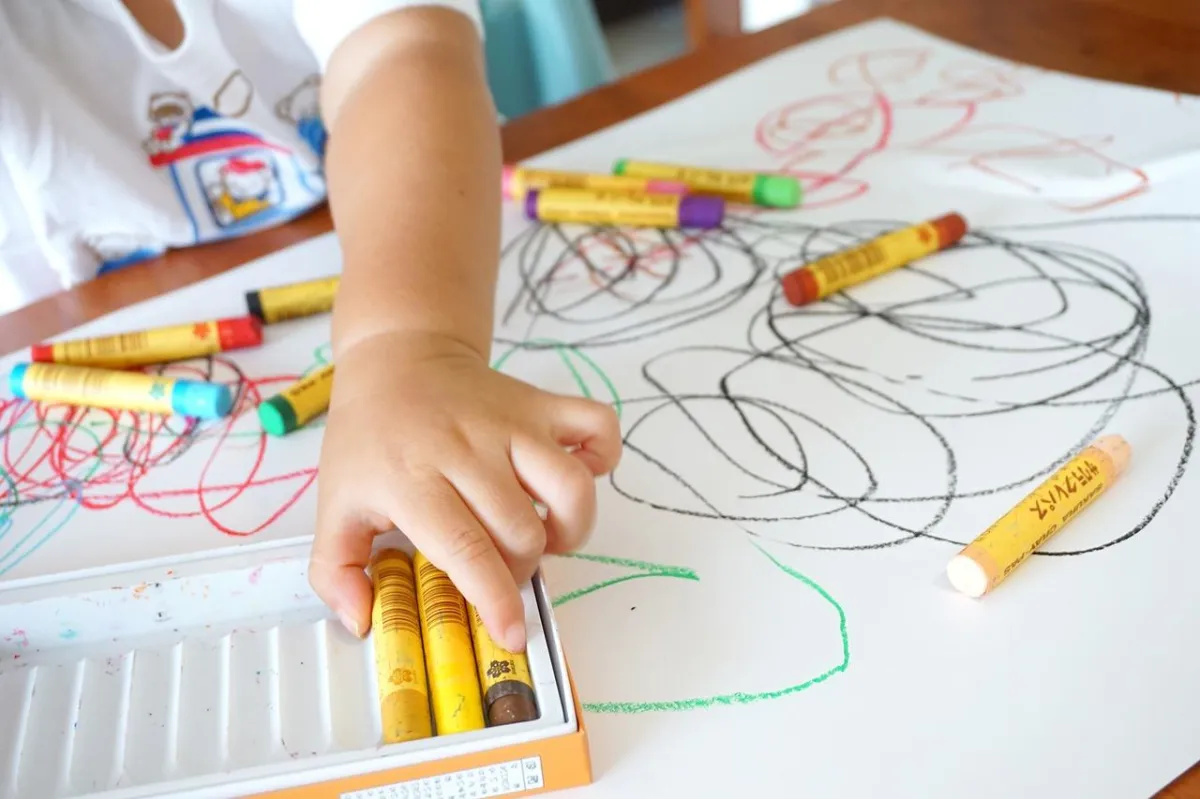"Make it Visual"
A Tool for Busy Parents with Kids Under 12

A Visual Aid to Support Boundaries When You're Pre-Occupied With a Task
You're busy. We get it. But your kids might not.
And just when you're on that video call, or having guests over, or navigating a tricky work project... that's when they seem to need you... right?
Visual aids to the rescue. Want to learn more about how and why this works? Read here.
Why do Visual Cues Work for Kids?
Visual cues stimulate the brain and allow access to self-support ideas for activities kids can do when parents are busy with a task.
Having options meets a child's needs for autonomy, freedom, choice and self-leadership.
This tool supports collaborative problem-solving skills-development.
A tangible tool directs energy away from any "strain" in a parent-child dynamic.

Why Do Visual Cues Work?
In the fast-paced and demanding world of parenting, finding effective ways to communicate with kids can be a real challenge. Whether it be communicating about boundaries, social-emotional learning skills, or expectations, etc. But the tool of VISUAL REPRESENTATION is a strategy that is very effective when parents are “busy” or otherwise occupied with a task, while their children may be wanting their engagement, resulting in a challenging dynamic.
Children learn in a multitude of ways, and one VERY important way is through the visual sensory system. Studies show that kids grasp and retain information better when it is presented in a visual format. Visual aids provide a concrete representation of abstract concepts, making it easier for children to understand and remember. I also like to say that this practice helps to take ideas in our head and make them tangible on paper. By utilizing visual cues, parents can effectively communicate boundaries to their children in specific scenarios.

Visual aids also cater to children's natural curiosity and engagement. Even when a child cannot read, there is something magical about how the brain processes visual information even when written text is used. But the caveat is that, it’s not like we just draw a picture on a whiteboard, without talking to our kids and walk away expecting them to know what we are trying to “teach” them in the drawing. Research shows that a visual representation along with developmentally appropriate explanations, discussion and parent-child engagement provides kids a solid way to reference the information we are trying to support them with if they forget.
Why can’t my kids just remember? If I can, so should they. They must learn, after all. I can’t be making signs and reminders all over the place, now can I?
This might be the argument some traditionalists might make. But if we’ve told the child 1000 times, and they still aren’t “getting the message,” it’s not the child that has a problem, it’s the approach we are taking that is problematic.
It’s kind of like a scientist doing an experiment. They might try it one way, and it doesn’t work, so they try it a different way to see if that does it… And scientists may try thousands of ways to do an experiment to finally achieve success. What makes us think that our incredibly unique kids who have a brain full of neural circuits that are supremely unique and no one else in the whole world has that exact brain circuitry, should just do it the one way we’re telling them (a.k.a. that our approach should work no matter what, and if not, it’s the child’s problem)?
Not only that, but a child’s brain is still a growing brain – it does not function like a fully matured adult brain. So no, we cannot expect that our child of 4 years or even 18 years could function just like a fully matured brain – modern brain science proves this. And, even as adults, we definitely can be supported with visual cues and reminders.
Thus, the conclusion is .... Visual representation works!
Who is THE CONFIDENCE COACH?

Hi, My name is Ashley Anjlien Kumar - The Confidence Coach. We want the best for our kids as we go about in this ever-changing modern world. I'm a parent just like you, but I've also been there as a kid too - and I know what it's like!
I am a Master Certified Parenting Coach, a Somatic Trauma-Therapy Practitioner, a Certified Self-Esteem and Self-Confidence Coach for Kids, and a Trauma-Informed SEL Facilitator as well as a Registered Yoga Teacher. I have worked with kids and parents for 22 years.
How do we teach our kids to hold their heads high, make strong confident decisions, and empower them to achieve what they want in life without getting stuck in the "ruts"? We can love our kids to bits, but we can't give them high self-confidence, soaring self-esteem, or a strong self-image. BUT we can provide them tools and resources that show them how to develop the mindset they need to develop these qualities.
And no, kids aren’t learning some of these concrete skills in school. And no, most adults don't know this stuff either! Heck, the stuff I share with kids, I only learned in my thirties – and it changed my life and the way I parent my own children.
I look forward to being part of your parenting 'village.'
Sincerely,

Ashley Anjlien Kumar
Questions or Concerns?
Contact [email protected]
© 2023 The Confidence Coach - Ashley Anjlien Kumar. All Rights Reserved.